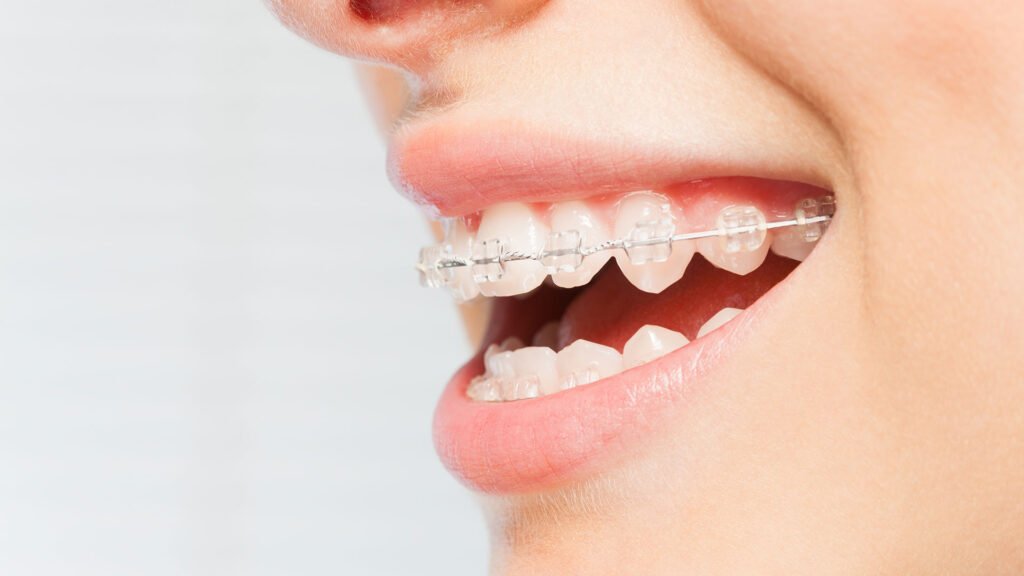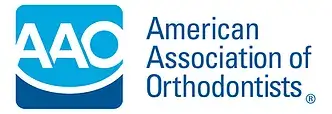Did you know that over four million people in the United States wear braces each year to correct their dental alignment? Choosing the right type of braces is a key decision to ensure effective orthodontic treatment that meets one’s dental needs and lifestyle. Two popular options are clear braces and metal braces, each with its own advantages and considerations. By understanding the differences between the two and evaluating factors such as aesthetics, durability, personalized care, and cost, individuals can make an informed choice. Let’s dive deeper into the comparison of clear and metal braces to help you make the best decision for your orthodontic journey.
Key Takeaways:
- Over four million people in the United States wear braces each year to correct their dental alignment.
- Choosing the right type of braces is essential for effective orthodontic treatment.
- Clear braces and metal braces are popular options that offer unique advantages.
- Factors such as aesthetics, durability, personalized care, and cost should be considered when choosing between clear and metal braces.
- Understanding the differences between clear and metal braces is crucial in making an informed decision.
Understanding the Basics: Clear and Metal Braces Defined
When it comes to orthodontic treatment, there are two main options: metal braces and clear braces. Both types of braces serve the same purpose – to correct alignment issues and improve the appearance of teeth. However, they differ in terms of aesthetics, materials used, and overall treatment experience.
Metal braces are the more traditional form of orthodontic treatment. They consist of metal brackets that are individually attached to each tooth using adhesive. These brackets are then connected by a wire, which applies pressure to the teeth, gradually moving them into the desired position. Metal braces are known for their durability and effectiveness in correcting a wide range of alignment issues, including overcrowding, spacing, and bite problems.
On the other hand, clear braces are made of ceramic or transparent materials that are designed to blend in with the natural color of the teeth. This makes them a more discreet and esthetic option, especially for individuals who are concerned about the appearance of traditional metal braces. Clear braces function in a similar way as metal braces, using brackets and wires to apply pressure and gradually align the teeth.
One key difference between metal braces and clear braces is the visual impact. Metal braces are more noticeable due to the metal brackets and wires, which can be a concern for individuals who are self-conscious about their appearance. On the other hand, clear braces offer a more subtle and esthetically pleasing option, as they blend in with the natural color of the teeth. This can be particularly advantageous for teenagers and adults who want to maintain their confidence and self-esteem during orthodontic treatment.
Overall, the choice between metal braces and clear braces depends on individual preferences, alignment issues, and orthodontic goals. Your orthodontist will evaluate your specific needs and provide recommendations based on their expertise and experience. By understanding the basics of each option, you can make an informed decision that will lead to a successful orthodontic treatment journey.
Comparing Durability and Effectiveness in Orthodontics
Both metal braces and clear braces are effective in treating various orthodontic issues. Metal braces are known for their durability and ability to withstand more extensive adjustment. They provide orthodontists with a high level of control and can effectively shift teeth into the desired position. On the other hand, clear braces, although not as durable as metal braces, can still deliver effective results.
Clear braces, made of ceramic or transparent material, offer a more discreet and esthetic option for individuals who are concerned about the appearance of traditional metal braces. However, due to the material composition, clear braces may require more attention and maintenance to prevent breakages and discoloration. Regular check-ups and proper oral hygiene practices are essential to ensure their long-term effectiveness.
It is important to note that the durability and effectiveness of braces also depend on individual factors such as oral hygiene habits, lifestyle choices, and compliance with orthodontic instructions. By following the guidance of their orthodontist and maintaining good oral hygiene, individuals can maximize the durability and effectiveness of both metal and clear braces.
To further understand the differences between metal braces and clear braces in terms of durability and effectiveness, refer to the table below:
| Aspect | Metal Braces | Clear Braces |
|---|---|---|
| Durability | High | Lower |
| Material | Metal brackets and wires | Ceramic or transparent material |
| Adjustment | Can withstand more extensive adjustment | May require more attention and maintenance |
| Apperance | Visible due to metal brackets and wires | Blends in with natural tooth color, more discreet |
| Main Benefits | Durability, high level of control | Esthetic, discreet |
When choosing between metal braces and clear braces, it is essential to consider factors such as durability, effectiveness, esthetics, and personal preference. Consulting with an orthodontist will help individuals make an informed decision based on their specific orthodontic needs and goals.
Aesthetics and Social Perceptions: Braces in the Spotlight
Aesthetics play a significant role in the decision-making process for many individuals considering orthodontic treatment. The visibility of braces, whether metal or clear, can have an impact on self-confidence and self-consciousness. Metal braces, with their noticeable metal brackets and wires, often draw more attention to the mouth and can make individuals feel more self-conscious about their appearance.
On the other hand, clear braces offer a more discreet option. They use ceramic or transparent materials that blend in with the natural color of the teeth, making them less noticeable. This aesthetic advantage can help individuals feel more comfortable and confident during their orthodontic journey.
Social perceptions surrounding braces are also influenced by aesthetics. The visibility of metal braces might lead to assumptions about age, hygiene, or socioeconomic status, potentially affecting how individuals are perceived by others. Clear braces, with their subtle appearance, allow individuals to focus more on themselves and their personal interactions, rather than on their orthodontic treatment.
It’s important to note that individual preferences and comfort levels vary when it comes to the visibility of braces. Some individuals may embrace their metal braces as a statement of self-expression, while others may prefer the discretion provided by clear braces. The choice between metal braces and clear braces ultimately depends on personal preferences and how individuals want to navigate through their orthodontic journey.
| Metal Braces | Clear Braces |
|---|---|
| Due to the metal brackets and wires, metal braces are more noticeable. | Clear braces blend in with the natural color of the teeth, providing a more discreet appearance. |
| Can make individuals feel self-conscious about their appearance. | Offer a more subtle option, helping individuals feel more comfortable and confident. |
| Social perceptions may be influenced by the visibility of metal braces. | Clear braces allow individuals to focus on themselves without drawing unnecessary attention to their orthodontic treatment. |
Is it better to get clear braces or metal? Examining Personalized Orthodontic Care
When it comes to choosing between clear braces and metal braces, personalized orthodontic care is crucial. Orthodontic treatment should be tailored to each individual’s specific needs and considerations. Factors such as the severity of alignment issues, treatment time, and lifestyle should be taken into account to determine the most suitable option.
Some individuals may prefer clear braces for a more discreet appearance. Clear braces are made of ceramic or transparent material, allowing them to blend in with the natural color of the teeth. This can be particularly appealing to individuals who are conscious of their appearance and prefer a less noticeable orthodontic treatment.
On the other hand, metal braces are known for their durability and effectiveness in correcting a wide range of alignment issues. They consist of metal brackets attached to the teeth and connected by wires. Metal braces provide orthodontists with a high level of control and can effectively shift teeth into the desired position.
Ultimately, the decision between clear braces and metal braces relies on individual preference and the guidance of a knowledgeable orthodontist. The orthodontist will assess each individual’s unique case, taking into consideration their dental needs and lifestyle. With personalized orthodontic care, individuals can make an informed choice that ensures the best possible outcome for their orthodontic treatment.
| Clear Braces | Metal Braces | |
|---|---|---|
| Aesthetics | Blend in with the natural color of the teeth for a more discreet appearance. | Visible metal brackets and wires. |
| Durability | May require more attention and maintenance to prevent breakages and discoloration. | Durable and can withstand more extensive adjustment. |
| Effectiveness | Can still deliver effective results in treating alignment issues. | Known for their effectiveness in correcting a wide range of alignment issues. |
| Treatment Time | May have a slightly longer treatment time compared to metal braces. | Can provide efficient alignment in a relatively shorter period. |
| Cost | Generally more expensive compared to metal braces. | Often considered a more cost-effective option. |
The Financial Implications: Cost-Effectiveness and Insurance Coverage
When considering orthodontic treatment, the financial aspect is an important consideration for many individuals. One of the factors to consider is the cost-effectiveness of different types of braces, including metal braces and clear braces. Generally, metal braces are less expensive compared to clear braces, making them a more budget-friendly option for some.
However, it’s important to note that the cost of braces can vary depending on several factors. The complexity of the orthodontic treatment, such as the severity of misalignment, can impact the overall cost. Additionally, geographical location can also influence the pricing of braces, as the cost of living varies from one area to another.
In addition to the upfront cost, another consideration is insurance coverage. Many insurance plans offer coverage for orthodontic treatment, including braces. However, the extent of coverage varies from plan to plan, and it’s essential to check with the insurance provider to understand the coverage specifics.
While metal braces are generally more cost-effective, it’s essential to weigh the financial implications alongside other factors, such as personal preferences and treatment objectives. Consulting with an orthodontist and discussing the cost-effectiveness and insurance coverage for both metal and clear braces can help individuals make an informed decision that aligns with their budget and orthodontic needs.
Conclusion
When it comes to orthodontic treatment, the choice between clear braces and metal braces ultimately comes down to individual preferences, dental needs, and lifestyle. Clear braces offer a more discreet appearance, blending in with the natural color of the teeth and reducing self-consciousness. On the other hand, metal braces are known for their durability and effectiveness in correcting a wide range of alignment issues.
Whether an individual values aesthetics or prioritizes durability and effectiveness, it is crucial to consult with an orthodontist to make an informed decision. The orthodontist will consider factors such as the severity of alignment issues, treatment time, and the individual’s lifestyle to provide personalized orthodontic care. By understanding the pros and cons of both clear braces and metal braces, individuals can choose a treatment option that best suits their dental needs and lifestyle.
It is worth considering the cost-effectiveness of each option as well. While metal braces are generally more affordable compared to clear braces, the overall cost of orthodontic treatment can vary depending on factors such as the complexity of the case and geographical location. Insurance coverage for orthodontic treatment may also influence the final decision.
In conclusion, individuals should carefully weigh the advantages and considerations of clear braces and metal braces. By considering factors such as aesthetics, durability, effectiveness, personalized orthodontic care, and cost, individuals can make an informed choice that aligns with their specific dental needs and lifestyle. The ultimate goal is to achieve the best possible outcome for orthodontic treatment and enjoy a confident, healthy smile.









